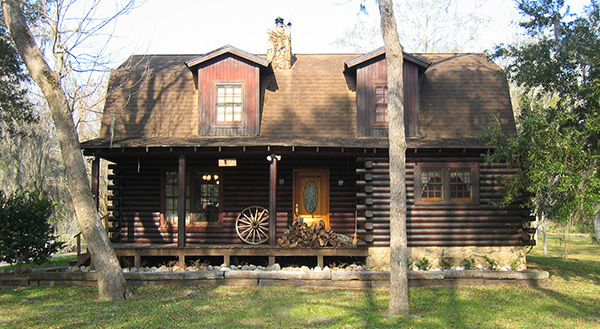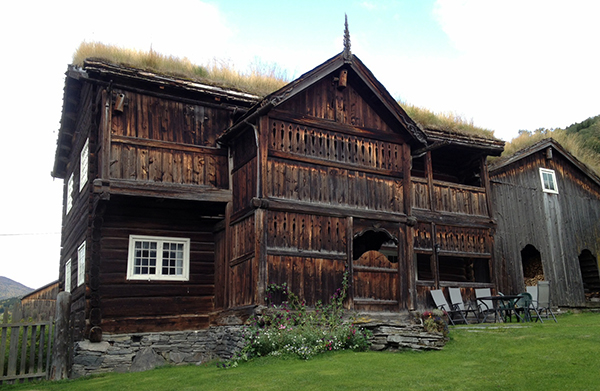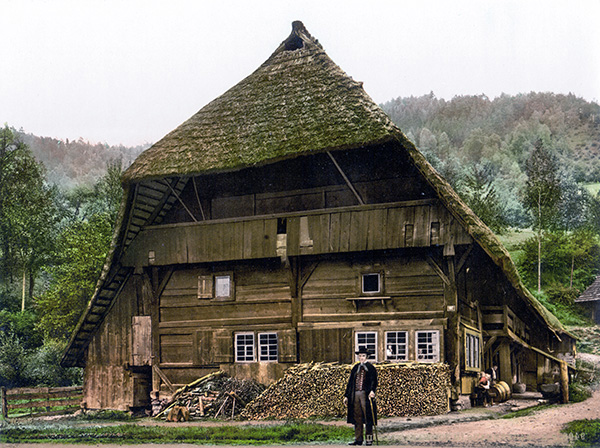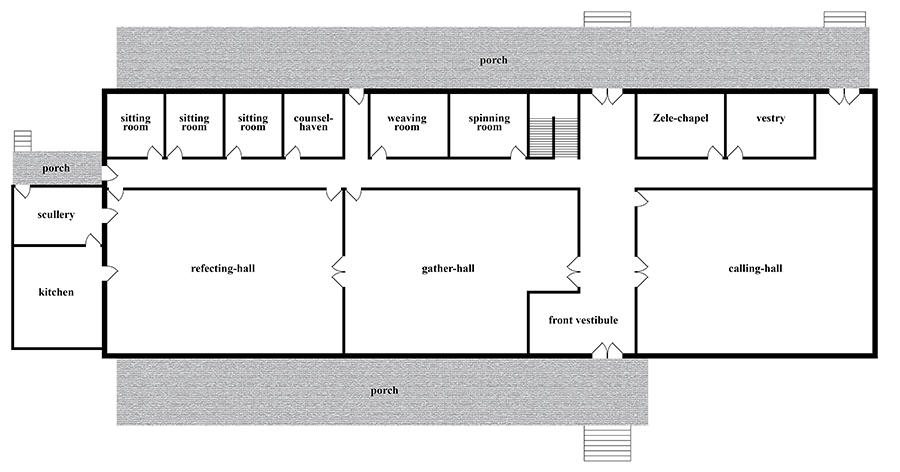Kaunis-lodge is a rustic chalet perched near the treeline of the Fiordhammar mountains. It is built of logs and stone. A grassy slope falls away from its wide front porch. A gentler pine-dotted slope rises behind it.
When I searched for images that captured the feeling of Kaunis-lodge, I didn’t find any that matched it perfectly. But I did find several that approached it.
The log cabin below has exactly the right kind of front porch. But the house itself is much too small. Kaunis-lodge houses a couple hundred women and girls, plus a healthy collection of toddlers and infants. Which means it is rather large! Plus it clings to a mountain’s side. It’s not plopped down in a flat suburban lawn!
Timber buildings can be surprisingly large, as you can see from the Norwegian farm from the 1700s/1800s in the photo below. The barn behind the house reminds me strongly of the Kaunis-lodge byre for its goats. And the setting—perched in the uplands of Norway—is more like the landscape where the Kaunis-clan dwells.
But the hill of the farmstead at Søre Harildstad is not so steep as is the mountain of the Kaunis-lodge. Nor is the farmhouse big enough.
In my search for the right photograph, after I came across several more “close but not quite” possibilities, I stumbled upon the Vogtsbauernhof farmhouse in the Black Forest Open Air Museum. It’s not a perfect match, but in size and feeling, it’s pretty close to perfect.
Th photo below shows the end of the structure, and the end of my Kaunis-lodge looks a lot like it! There’s the tall, massy roof; the upper stories; and even the kitchen windows. (Except the Kaunis-lodge windows possess panes of horn, not glass.)
The Fiordhammars are steeper than the terrain of the Black Forest, but still! Gaze and fill your eyes: this is Kaunis-lodge! 😀
The photos give a nice sense of the ambience of Kaunis-lodge, but there’s nothing like a floor plan for pinpointing where certain story events transpired.
On the ground floor of the lodge (below), you can see the location of the counsel-haven where Sarvet has her momentous interview with Mother Johtaia. Just outside it in the hallway rest the friendship-benches, where Livli sits to wish her friend Mimmi a “joyous linking.”
(Click each floor plan image to see a larger view for ease in reading the labels.)
The calling-hall is the worship space where Sarvet celebrates Other-joy, and where Livli skips a number of fete-day rituals after Malaka-degg is banned from attending them.
Once Sarvet attained the stature of Holy Caller, her bednook rested in a private, unshared chamber. But, as a girl, she slumbered in the sleeping hall, which is lined with bednooks, crammed in wherever they will fit. Livli also passed her nights in a sleeping hall bednook, until she decided to switch to an unoccupied bednook in the spa.
Clerestory windows set within the slope of the roof shed light in the sleeping halls and the central boxrooms.
For more about the world of the Kaunis-clan, see:
What Is a Bednook?
Hammarleeding Fete-days
Why Did the Three Goats Cross the River?
Origin of Canning—Not What You’d Think!
Livli’s Family
Ivvar’s Family
Pickled Greens, a Hammarleeding Delicacy






